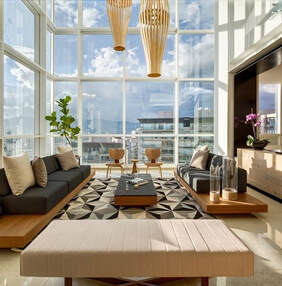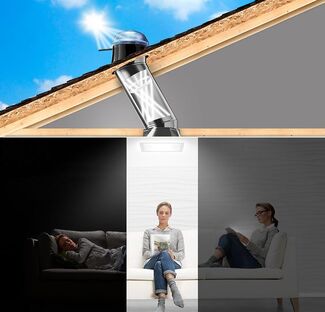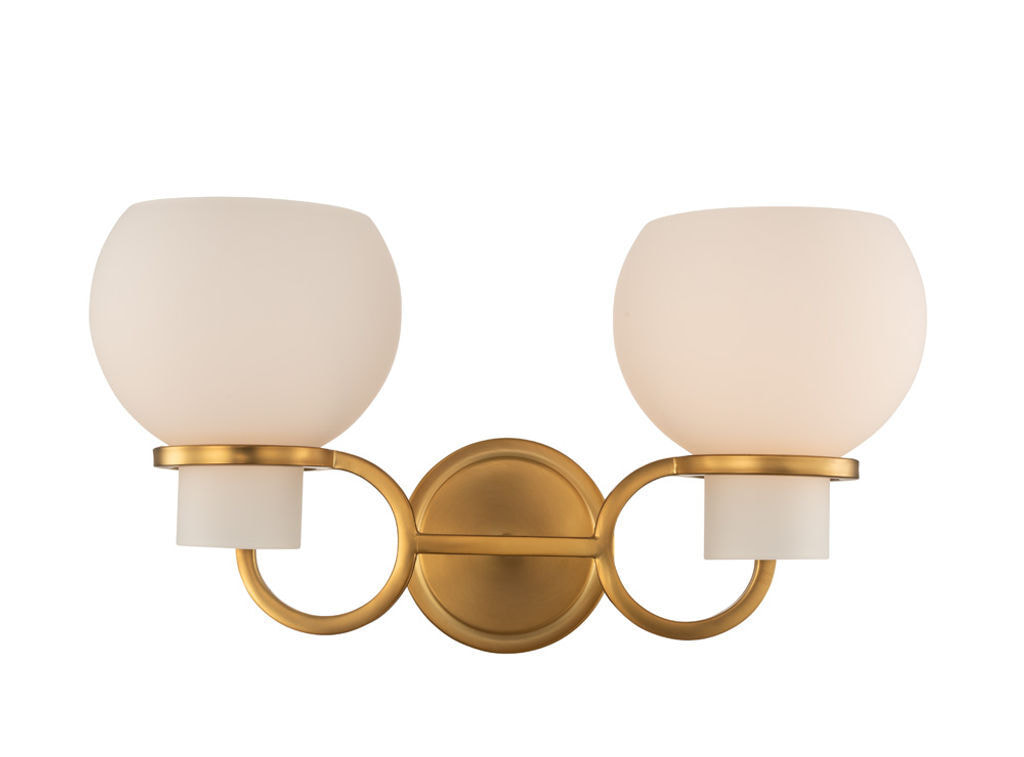Skylights and solar tube lights briefly explained by the Market Watch Guides offer options to bring in more natural light when your current windows just aren't doing the job. These options are the most invasive and time consuming to implement, but provide the type of light we humans can benefit from the most - natural daylight - especially if you have north facing rooms or rooms without windows or windows that just don't provide enough natural light due to other obstructions. Energy.gov states: If you want to maximize daylighting and/or passive solar heating potential, consider a skylight's position. Skylights on roofs that face north provide fairly constant but cool illumination. Those on east-facing roofs provide maximum light and solar heat gain in the morning. West-facing skylights provide afternoon sunlight and heat gain. South-facing skylights provide the greatest potential for desirable winter passive solar heat gain than any other location, but often allow unwanted heat gain in the summer.  But what about when the sun goes down or you live in a place where sunshine can't always be counted on? You may want to look at Reflective Lighting Strategies. Let's start with color. First of all, always test your paint colors on all walls before committing since color in a room is impacted as the angle of the sun changes throughout the day. It's likely not a surprise that white reflects the most light out of any color. Tinting a paint color means adding white to it. If you find a color you like but worry it is too dark, have your local paint store add white to tint it and test again.
Consider the sheen of the paint to increase the reflection of light. Shinier/glossier sheens will make your paint color appear lighter. Take care to prepare the surfaces well for the shinier sheens as they will show more surface imperfections. Each paint manufacturer and each type of paint may have slightly different sheens but in general you will be using one of these shown here.. Another reflective lighting strategy is to limit textures (and clutter, of course). The more textures used in a space, the more shadows created. This brings us to using the right metals and mirrors to reflect light. Mirrors can be a BIG game changer. Placed in the back of shelves or opposite a window or on a table surface will bounce whatever lighting you have in the room around exponentially! Using the lighter metals - silver and gold rather than bronze or iron - will help bring sparkle as it is used throughout a space. We all have to add artificial light to manage lighting at night and for rooms deficient of natural light. Adding lighting in your home for all the tasks you do is important. Think levels and directions! Lights above or under cabinets illuminate downward, lights on tables or on walls can illuminate up or down, and lighting along baseboards or in-floor lighting brings light from below. And don't forget about the light span on your light sources. If you want a wash of light, a wider span is needed. If you just want to focus on a specific item or area, directional lighting allows you to highlight specific areas with a narrower light span. Last, but not least, know your light bulbs. An article by Frontpoint tells us what you want to look for to balance the amount of light with energy efficiency. "There are four different types of light bulbs available for residential use: incandescent, halogen, fluorescent, and LED. These varieties have different characteristics including the quality of light emitted, the amount of energy used, and more." Lumens and the Kelvin Color Temperature Scale are our friends. Watts, not so much! Once again Energy.gov helps us. "When you're shopping for light bulbs, think about the brightness you want by comparing lumens instead of watts. A lumen is a measure of the amount of brightness of a lightbulb -- the higher the number of lumens, the brighter the lightbulb." Just one of the examples they give is this:
Overall, when it comes to color and light bulbs, take it step by step to see what feels right for your home and how you use the spaces. Let me know what you've done to improve the lighting in your home and how it affected you.
As promised in my last post of 2023, I'll bring you another design dilemma and tips to resolve it in my next post.
0 Comments
|
Meet Your DesignerI, Brenda Szarek, am the founder of Autumn Light Interiors. I have immersed myself in home design and problem solving for years and have creative solutions for all kinds of interior design dilemmas. I hope you enjoy my tips, tricks, trends, and inspiration to help you find your way to a well-designed, comfortable, and functional home you can be excited to live in and welcome others within. Archives
July 2024
|











 RSS Feed
RSS Feed
